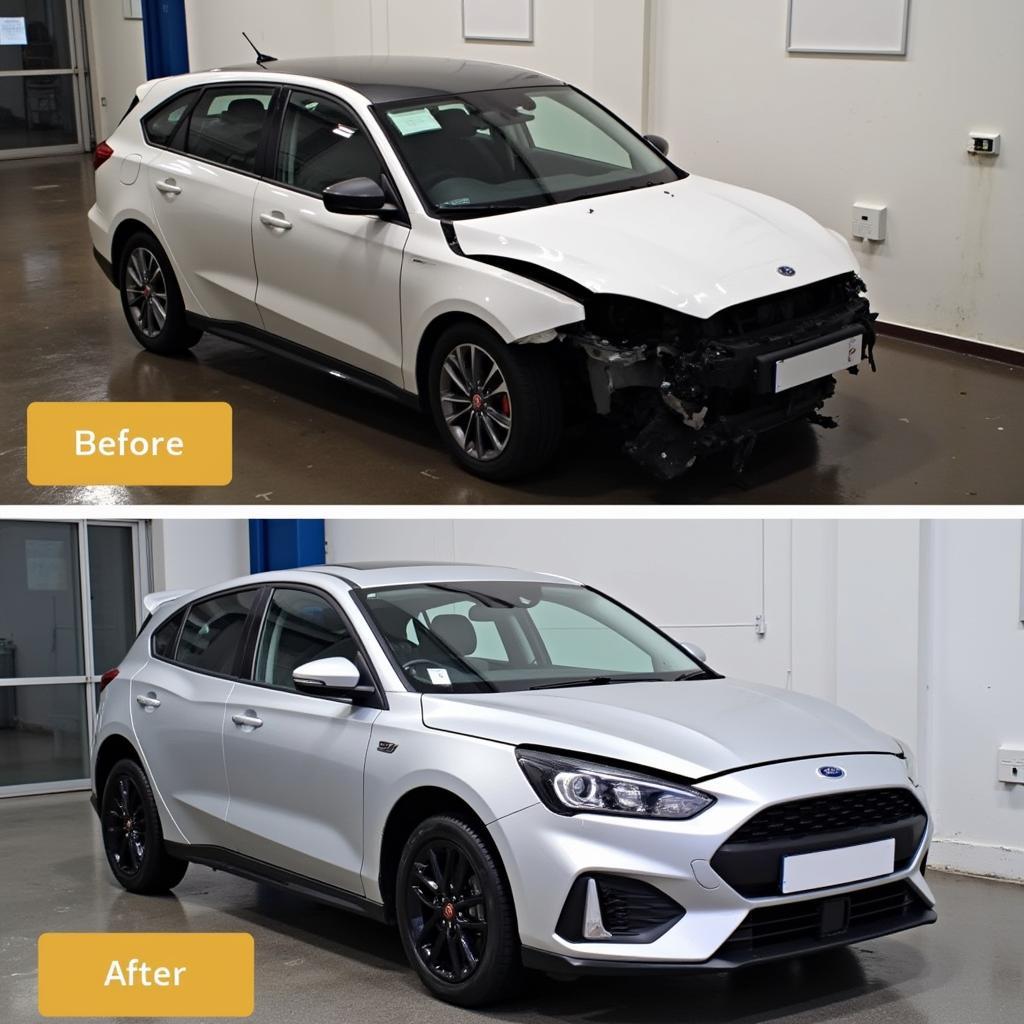Car Body Repair Steel is crucial for restoring a vehicle’s structural integrity and aesthetics after damage. Choosing the right type and understanding its properties is essential for a successful repair. This comprehensive guide explores everything you need to know about car body repair steel, from its various types and applications to the best repair practices.
Did you know there are different types of steel used in car body repair? From high-strength steel to mild steel, each type offers unique properties that impact its suitability for various repair scenarios. Understanding these nuances can be the difference between a successful repair and a recurring issue. Soon after a car accident, you will need to go through the process of car body repair steel sheet nottingham.
Understanding Car Body Repair Steel Types
Several types of steel are commonly used in car body repair. Each type has its own strengths and weaknesses. Let’s break them down:
- Mild Steel: Known for its formability and weldability, mild steel is a common choice for non-structural components and easier repairs. It’s more susceptible to corrosion, though.
- High-Strength Steel (HSS): Offering increased strength and lighter weight, HSS is often used in modern vehicles for structural components. However, repairing HSS requires specialized welding techniques and expertise.
- Ultra-High-Strength Steel (UHSS): The strongest type of steel used in car bodies, UHSS offers maximum protection in crashes. Repairing UHSS is complex and requires specialized equipment.
- Galvanized Steel: Coated with a layer of zinc, galvanized steel provides excellent corrosion resistance. This makes it a popular choice for areas prone to rust.
How to Choose the Right Car Body Repair Steel
Choosing the correct type of steel for a specific repair is vital for ensuring the vehicle’s safety and longevity. Factors to consider include:
- Location of the Damage: Structural repairs demand high-strength steel, while cosmetic repairs might use mild steel.
- Vehicle Make and Model: Different manufacturers utilize different types of steel in their vehicles. Consult the vehicle’s repair manual for specific recommendations.
- Severity of the Damage: Minor dents might be repairable with body filler, while significant damage requires replacing sections of the steel sheet.
Car Body Repair Steel Welding Techniques
Welding car body repair steel requires precision and expertise. Different types of steel necessitate specific welding techniques. Improper welding can compromise the structural integrity of the vehicle.
- MIG Welding: A common method for welding car body steel, MIG welding uses a continuous wire feed for a cleaner, stronger weld.
- TIG Welding: Offering more control, TIG welding is ideal for thinner gauges of steel and intricate repairs. It’s generally preferred for aluminum and stainless steel too.
- Spot Welding: Often used in factory settings, spot welding fuses two pieces of metal together using heat and pressure at specific points. It’s less common for aftermarket repairs.
Best Practices for Car Body Repair with Steel
Following best practices ensures a high-quality, long-lasting repair. Consider the following:
- Cleanliness is Key: A clean surface is essential for proper adhesion and welding.
- Rust Removal: Remove any rust completely before repairing or replacing steel panels. Consider car body repair mesh for larger areas.
- Proper Fitment: Ensure accurate fitment of replacement panels to avoid gaps and misalignments. This is essential for maintaining the vehicle’s structural integrity and aesthetic appeal.
- Protection Against Corrosion: Apply appropriate primers and sealers to prevent future rust formation. This is especially important in areas exposed to moisture and road salt.
“When working with high-strength steel, always follow the manufacturer’s recommended welding procedures to avoid compromising the material’s strength,” advises John Smith, a certified automotive repair technician with 20 years of experience. “Using the incorrect technique can significantly weaken the repaired area.”
Maintaining Car Body Repair Steel
Protecting your vehicle’s repaired steel from rust and further damage is important for maintaining its value and safety. Regular washing, waxing, and inspections can help prevent corrosion. Address any chips or scratches promptly to avoid rust formation.
“Regular inspections are crucial for identifying potential issues early on,” adds Sarah Jones, a leading automotive engineer specializing in materials science. “A small rust spot can quickly escalate into a major problem if left untreated.” Remember to check out our helpful guide on car body repair what gauge steel thickness for further information.
Conclusion
Car body repair steel plays a critical role in restoring a vehicle’s structural integrity and appearance. Choosing the right type of steel, employing appropriate welding techniques, and adhering to best practices are essential for a successful and long-lasting repair. By understanding the nuances of working with car body repair steel, you can ensure a safe and reliable repair. You can find car body repair shops near you, such as those offering car body repair ayres road.
FAQ
- What is the strongest type of steel used in car body repair? Ultra-High-Strength Steel (UHSS)
- What type of welding is best for thin gauge steel? TIG Welding
- Why is galvanized steel used in car body repair? For its corrosion resistance
- What should you do before welding car body steel? Thoroughly clean the surface
- How can I prevent rust on car body repair steel? Regular washing, waxing, and applying protective coatings
- Can you use solder for car body repairs? Solder is generally not recommended for structural car body repairs due to its lower strength compared to welding.
- What are some common problems encountered during car body repair with steel? Rust, misaligned panels, and improper welding are some common issues.
Need assistance with car body repair? Contact us via WhatsApp: +1(641)206-8880 or Email: [email protected]. Our 24/7 customer support team is ready to help.

